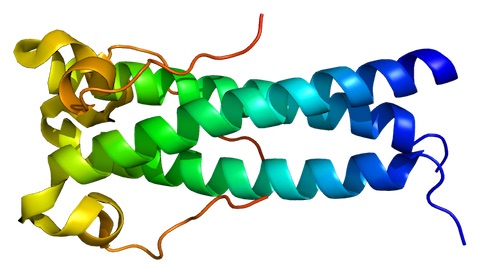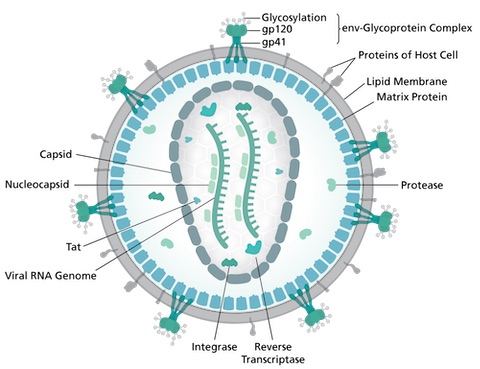
In earlier episodes, you heard that trillions of viruses live peacefully, even beneficially, within each of us today.
And that our ancestors battled now-extinct “fossil viruses,” which are preserved in our own genetic code.
Turns out, that’s been beneficial too.
For instance, viruses helped drive our evolution.
100 million years ago, proto-mammals were infected with a virus that encoded into their DNA the ability to produce syncytin, a protein that viruses use to fuse cells together so they can move between them.
But these early mammals evolved to use this protein in a different way: to fuse the placenta to the uterus, allowing nutrients to pass from mother to fetus and making live birth possible.
Since humans diverged from apes, our proteins have adapted frequently to viral threats, even if they’re not part of the immune response. In fact, virus interactions now make up a third of all our protein adaptations.
Finally, researchers found that ancient viral DNA in our genetic code prompts a more vigorous response to new viral threats.
In experiments, when they removed fossil virus DNA from a cell, its immunity was severely weakened. Restoring the viral DNA restored the immune response.
While a rare few viruses have been quite harmful to humans, the vast majority—over millions of years—have helped us to become what we are and then to remain healthy.
Background
Synopsis: Viruses evolve alongside their cellular hosts, but many orchestrate step changes in evolutionary lines as they cause their host organisms to evolve, leaving behinds bits of their genetic material in our genomes as clues.
- Recently, researchers applied big data analysis to paleovirology while working to determine the impact of viruses on the evolution of mammals, especially humans.
- They found that many proteins adapt to viral threats even if they are not involved in the immune system response, and that these virus-interactive proteins have been adapted three times as much as other proteins.
- In fact, a third of all adaptations to our proteins since humans diverged from apes have been driven by viruses.
- Other scientists have shown that some of the foreign genetic material in endogenous retroviruses (ERVs) may boost our immune systems, protecting us from other viruses.
- Humans have a two-part immune system.
- Our more primitive innate immune system provides a first line of defense, launching immediate responses in the presence of any foreign invaders.
- The adaptive immune system then learns to recognize specific invaders and respond with customized antibodies, T cells and B cells.
- Researchers looked for ERVs that could turn on the early innate immune response, and they found thousands. Removing these ERVs from the cell DNA produced a severely weakened immune response, whereas adding them back restored the original response. These ancient viral elements protected the cells against new infections.
- The human genome even carries some beneficial Neanderthal ERVs that assist our immune system response.
- Humans have a two-part immune system.

- Paleovirologists also study how viruses affect other mammals, like our close relatives the primates. For example, they seek to understand why apes are immune to some deadly human viruses like AIDS, and how that knowledge might help humans.
- They found a certain retrovirus fossil in apes but not in humans, and discovered humans have a gene that enables them to make a protein to protect them from the ancient retrovirus. Apes, however, were crushed by an epidemic.
- But while this gene saved us from the ancient retrovirus, it makes us vulnerable to HIV and AIDS today.
- Scientists are now working on strategies to develop a therapy focused on that human gene.

- A most astounding finding: Millions of years ago, ERVs may have been critical to the evolution of the placenta, which enables mammalian pregnancy and birth.
- More than 100 million years ago, a primitive mammal was infected with a virus that uploaded an ERV enabling the production of a protein called syncytin.
- Viruses use syncytin to fuse cells together so they can move between them.
- But mammals found a different use for it. Syncytin fuses the placenta to the uterus, allowing nutrients to be passed from the mother to her fetus and making live birth possible.

